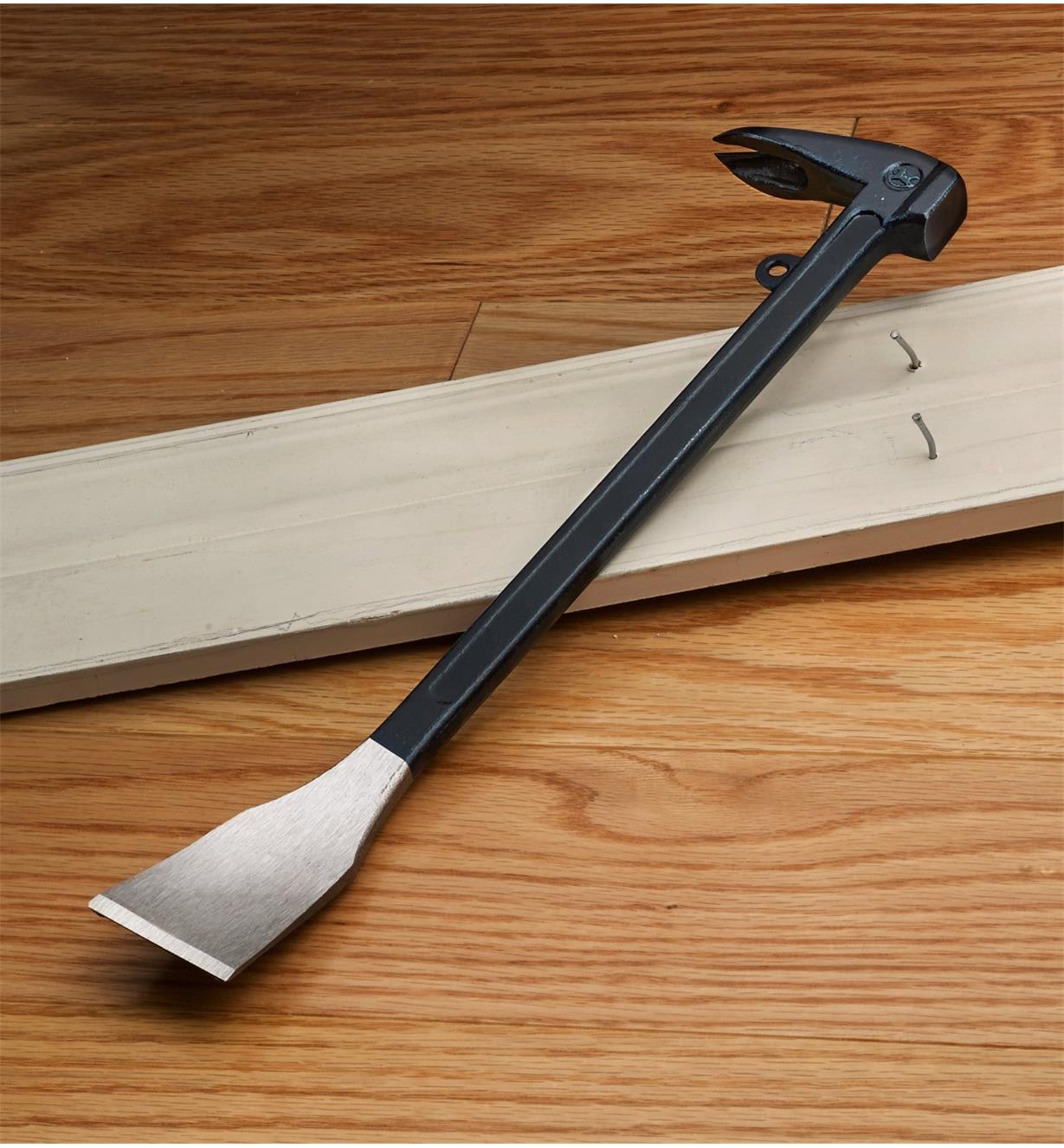Residential Demolition Tooling
3cwillu
New Comment
A well-made catspaw, with a fine wide chisel on one end, and a finely tapered nail puller on the other (most cheap catspaws' pullers are way too blunt) is very useful for light demo work like this, as they're a single tool you can just keep in your hand. It's basically a demolition prybar with a claw and hammer on the opposite end.

Pictured above is the kind I usually use.
I spent the weekend doing demolition: I'm redoing the first floor bathroom. I previously did the ones on the second and third floors, so I now feel like I have a bit of practice. Before I did my first one I read a bit about how to do it and what tools people tend to use, and while I don't remember any of it being wrong exactly, I know how much stronger opinions about what equipment is useful and in which cases it's worth getting something nice. So: here's my prioritized list of what I think is most helpful for residential demolition.
Critical:
Very useful:Elastomeric p100 respirator. Demolition is incredibly dusty, especially if your house has plaster, and you do not want to be breathing dust. It is possible to get disposable p100s, but the elastomeric ones get a much better seal, and seal is really important.
Ear protection. A lot of this is very noisy, including sudden sharp noises from hammering that are especially bad for your hearing. You want something you can comfortably wear for hours.
Eye protection. I normally only put on (additional) eye protection when I'm doing something especially likely to send out fragments, like hitting things with hammers, but if I didn't normally wear glasses I would probably wear safety glasses in the whole time.
Gloves. Otherwise you'll tear up your hands.
Pry bar. I probably spend more than half my time using the pry bar, separating things that have been nailed (or glued) together. I have the Stanley "Wonder Bar" and like that it's shaped so you can hammer it into place.
Thick plastic sheeting and masking tape. If you don't surround where you are working with plastic, you will end up with dust throughout the house. You can also put a layer of plastic on the floor before you start, which is helpful in cleanup though not critical.
Useful:Hammer. Often you can use the pry bar alone, but sometimes you need to hammer it into position before prying. Also, sometimes hitting things to loosen them is helpful, and drywall screws are brittle enough to often break off with a good hit.
Reciprocating saw (sawzall). When you're taking things down and tossing it all you want fast and not pretty, and this is the saw for that. I want at least a wood+nails blade (though I try to avoid cutting nails with it since it will go dull very quickly) and a metal cutting blade. On this project I used it for cutting partition wall studs, water damaged oriented strand board, and, with the metal cutting blade, an enameled steel bathtub.
Contractor cleanup bags. These are plastic, and impressively strong: filled with more masonry debris than I can lift they don't tear.. You can put wood with nails in them, and while the nails might poke holes in the bag, they don't rip to bits.
Occasionally useful:Drill. While it usually makes sense to pry, cut, or break screws, sometimes it's easier to back them out.
Shop vac. Especially good at getting up dust.
Locking pliers (vice grips). Sometimes it is useful to be able to really grab something and twist, and these are much stronger than you are.
Utility knife. Especially useful for separating something you want to keep from something you're going to tear up, since it lets you get a clean line and preserves the finish.
Sledgehammer. Some things just go faster when you hit them really hard.
Circular saw. With a demolition blade, it's very powerful and very fast, but I've almost never used mine for demo. Instead, the reciprocating saw is fine.
Standard pliers. Good for taking out carpet staples, or anything else where you don't need that much force and want quicker repetition than you'd get with locking pliers.
Chisel. Can be useful for getting up tile or cutting something clear, but the pry bar is fine for the former and a saw is usually better for the latter.
Cordless tools. You can get excellent used professional quality corded tools for less than what you'd pay for entry level battery-powered ones. If you're doing this all the time then cordless can be worth it, but if you do a bit every few years the lifetime issues with batteries are a major issue.
Oscillating tool. Some people say these are useful; I've never used one, and in the examples I see people give they seem like only a small improvement.
Other specialized tools. If you're doing the same thing over and over (extracting nails, pulling carpet, removing shingles, etc) then getting a tool specifically for that seems like it would be be worth it. I haven't done this, though.
Comment via: facebook, mastodon